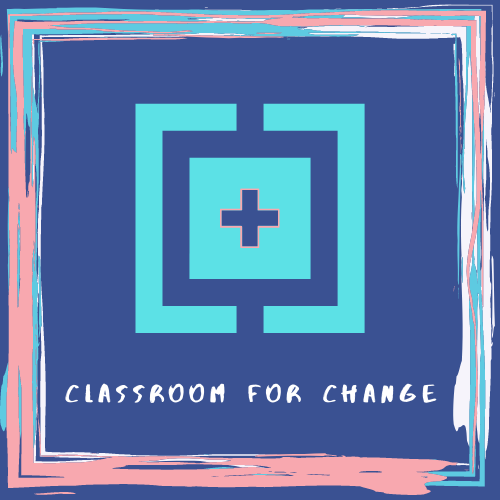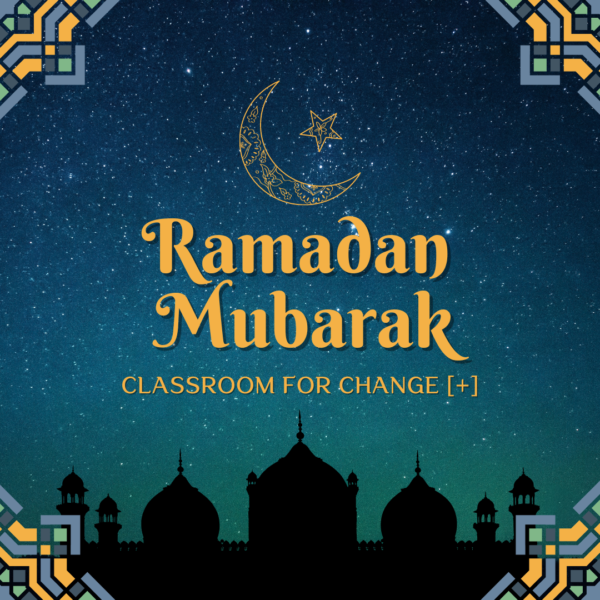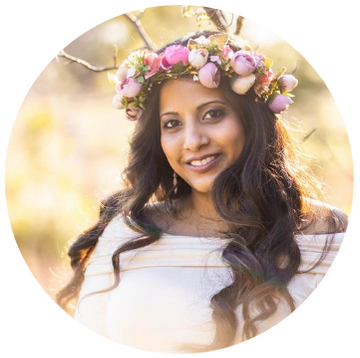A Personal Narrative
What’s in a Name?
In the summer of 1984, I was born to my Indian immigrant parents and given the name, Rose Rohini Chemmanoor. Later in life, I learned the meaning of my name and since then have ‘worn it’ like a badge of honor. However, it wasn’t always that way.
Coincidentally, my maternal and paternal grandmothers were named Rose, which made it easy for my parents to settle on a name. Wanting to keep our rich Indian heritage alive, they assigned my sister and me Indian middle names. Mine is Rohini, one of the nakshatras in Indian astrology, also known as my “birth star.” Upon learning her granddaughter was born under the propitious star, my paternal grandmother urged my parents to assign the auspicious and lucky star as my middle name. Chemmanoor, my maiden name, is a family name well known in Kerala, India and roughly translates to “land of the red sand.” As an adult, I can say I pride my family history and feel honored to carry a name reflective of its origins. More often than not, your name is your first identity. In many cases, it’s what people first learn about you. What’s in a name? Apparently, a whole lot.
As a child growing up in “White America,” my name was torn apart, scrutinized, and butchered. Believe it or not, people even gave me (and continue to give me) a hard time with my first name. You would think a name like Rose would help me blend in, but no, think again. I don’t phenotypically present as a ‘Rose.’ Therefore, throughout my life I’ve been asked, “Is that your real name?” or “What’s your real name?” This type of unwelcomed questioning is a prime example of what you call a microaggression. Microaggressions can be intentional or unintentional and are subtle (or not so subtle) verbal or non-verbal behaviors that communicate a bias or negative attitude toward a non-dominant cultural group. Needless to say, microaggressions often have me feeling annoyed and irate. I do my best to take the high road though, which involves enlightening those who inquire with a brief history of Christianity in Kerala where ancient belief and canonical doctrine say my ancestors trace back to those that were evangelized and baptized by St. Thomas the Apostle hence the Christian sounding name. People forget there are nine or more recognized religions in India–Christianity being one of them. They question my identity because I am not what they expect. Someone who looks like me shouldn’t have an “American” sounding name. As a young girl, I shied away from sharing my middle and last name whenever possible because revealing them often led to teasing. Although initially a source of embarrassment, I later grew to appreciate my full name and its significance. Now, I can honestly say I love my name. Like me, it is a beautiful, blended reflection of my Indian and American roots.
The Trouble With Appearances
The trouble with appearances is they can be deceiving and misleading. In my own experience, strangers frequently get hung up on my appearance. I’ve been asked, “What are you?” too many times to count. Consequently, I’ve asked myself why people are so set on “figuring me out” so to speak. The answer? An insurmountable number of human beings are desperate to label and judge and put others in a box. If a person doesn’t match their preconceived notion, it shakes up their world, and they don’t know how to file that individual in their mind. What do you think of when you hear the word “American”? Oddly, amongst certain ethnic groups, “Americans” are synonymous with White folks, and other races, such as “Black,” “Chinese,” “Indian,” etc. are immediately placed into the “foreigner” category with no regard for nationality or citizenship. Why is it that being American is equated to being White? We are entitled to our identities, and to imply that we are not American based on the color of our skin strips us of our identities. Nowadays, when I’m faced with the question ”Where are you from?” I reply without hesitation, “Maryland” and watch facial expressions contort from curiosity to puzzlement. “That’s not what you meant? Are you asking about my ethnicity?” I clarify. Some people genuinely are looking for an opportunity to connect or spark a conversation, but there are others that inquire in a way that makes you feel uncomfortable, like to them, you don’t belong. I proudly tell those that bring my identity into question that I am of Indian heritage and that I was born and raised in Maryland, and America is my home. The message I consciously send them is that even though I may not fit the stereotype of a “typical” American, I am American, and I belong.
Blending In
As a child growing up in Baltimore and neighboring towns, there weren’t many people that looked like me or identified as Indian American. As a result, I tried my best to blend in and not stick out like a sore thumb. I pushed away anything that was “different,” like my Indian culture, to the point where I even refused to learn my parents’ native language, Malayalam. “Different” was perceived as “weird” by my peers. Why would I want to take that on as a kid when things were already turbulent and confusing? In retrospect, I regret it, and I wish I could have had the courage and knowledge then that I do now.
Standing Out
It wasn’t until high school that I discovered “different” could equate to interesting, even cool. Even though I was the only Indian American student in my predominantly White high school until my sister joined me, I was not only accepted, I was embraced. The difference being my peers expressed genuine interest in learning more about my culture. Once I felt comfortable in my own skin, I immersed myself in cultural events sponsored by Indian organizations, such as KAGW, and got “in touch” with my roots through dancing and performing. For the first time in my life, I had a circle of friends who not only looked like me, but also shared the same life experiences as me and understood what it was like growing up bicultural in America.
In terms of multicultural exposure, the most eye-opening experiences occurred in college while at the University of Maryland, Baltimore County (UMBC), a university nationally recognized for its diversity. Up to that point, I had only attended relatively homogenous Christian private schools. It was a whole new world. All of a sudden, I was surrounded by students of every race, religion, background, etc. At UMBC, I was able to freely explore and celebrate my Indian culture in a diverse setting, no strings attached. I joined the South Asian Student Association, which led to connections within the Indian community and opportunities to share my love of fusion dance (a mixture of pop, hip hop, and classical Indian) by performing in the annual showcase. UMBC is where I formed lasting friendships with people that were unlike those I had met before. That formative period in my life changed the lens in which I viewed the world, and that’s when I came to truly value the gift of diversity.
In the Classroom & Out in the World – Lessons for Life
Upon graduating, I went on to begin my teaching career. For nine years, I taught at an unparalleled school for bright students with dyslexia and other learning differences. I tell people if they want to see magic happen, visit The Summit School. Students who enter feeling hopeless, defeated, and abandoned with holes in their reading and writing skills exit as confident self-advocates who have discovered their own brilliance. Despite the fact I was among one of the only teachers of color in a school that served predominately White students, I felt appreciated and valued in a community that celebrated differences. Every child and every teacher had a place and a voice. It was important for us as teachers to instill value in our students for their unique abilities, talents, and gifts despite the labels and stigmas that were placed upon them. I was surrounded by fellow educators that were driven with the same mission to teach life’s most important lessons–the ones you couldn’t find in textbooks. It was here that my power and influence as an educator was fully realized. I now had a responsibility to share my Indian culture–not only for representation but also to challenge prejudices and break stereotypes. For my students and me, the lessons we cherished most were the ones filled with compelling discussions about issues we face as a human race. It filled me with hope to see that my students were equally infuriated by injustice and eager to act as agents of change. Recognizing that children are our future, it was and is my duty as an educator to prepare and equip my students with the necessary knowledge and skills to combat the social justice issues of our time.
Teaching is my life’s work, and there’s no other job on this planet that could be more paramount. At the end of the day when our kids leave our classrooms and go out into the world, we stand behind them in hopes that they carry the values we’ve instilled in them. There is no greater “lesson” I could teach or impart to my students than that of character–a moral compass to decipher right and wrong in order to uphold justice and equity in the face of adversity. In some ways, I saw my classroom as a kind of platform, and just like my students who have graduated and moved on, I, too, must move my work beyond the classroom. I owe it to them–to everyone, including myself, to be the kind of person I’ve taught them to be.







![6th Annual Dream Gala ✨
May 9, 2024 4:00-7:00 p.m.
STAMP Colony Ballroom
🪶 DISCOVERING OUR POWER • Solidarity Among Us All ✊
Descubriendo Nuestra Fortaleza • Solidaridad Entre Nosotros
Keynote Speaker: Luz Chavez Gonzales @luzchavezg, United We Dream Maryland Youth Organizer @unitedwedream
Celebrating immigrants and our efforts with performances, dancing, food, prizes, fundraising for undocumented students, and commUNITY!
Presented by @plumasatumd @thestampumd @umdundoc @migratingshells
The gala is open to all UMD students, faculty, staff, alumni, + outside community members!
Free ticketed admission 🎫
Register at umdtickets.universitytickets.com 🔗
*Donations are greatly appreciated. Visit www.stamp.umd.edu/TDCF to donate to the Terp Dream Crisis Fund. 🐢
I'm excited for this event and look forward to seeing you there! 💃🏽
In solidarity! ✊🏽
Rose
#DreamGala2024 #DreamGala #UMDDreamGala #Dream #Dreamers #Immigrant #ImmigrantRights #Community #Solidarity #ClassroomforChange [ + ]](https://classroomforchange.com/wp-content/plugins/instagram-feed/img/placeholder.png)